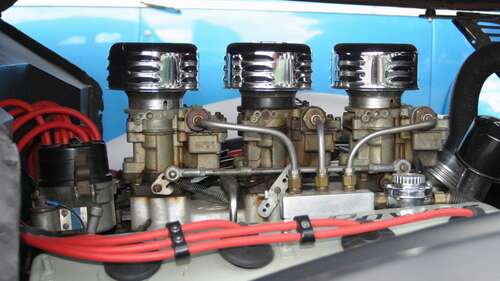
Chrysler’s 426 Hemi resulted from years of research and development, culminating in 1964, as a response to Ford’s domination of the NASCAR circuit the previous year. Chrysler, along with Dodge and DeSoto, had developed Hemi technology a decade before the 426 Hemi came to fruition. However, manufacturing the hemispherical combustion chambered cylinder heads proved overly complex and expensive, so Chrysler abandoned it in favor of the 420-horsepower 413-cubic-inch big block Max Wedge engine.
The 1963 NASCAR season’s failures signaled the end of the 413 Max Wedge engine’s time in Chrysler’s racing efforts, sending the company back to the lab. At first, engineers bored the 413 RB’s cylinders from 4.1875 inches to 4.25 inches to create a 426 cubic-inch version of the Max Wedge, but that increase only gained five horsepower. Next, they replaced the wedge-design cylinder heads with a new evolution of Hemi cylinder heads, and the 426 Hemi was born.
The magic of the 426 Hemi engine lies in its dome-shaped combustion chamber, spark plug placement, and free-flowing design. The Hemi spark plug’s location near the top center of the combustion chamber allows for even ignition of the compressed fuel and air mixture. In addition, the Hemi head’s large intake and exhaust valves and corresponding ports allowed adequate fuel induction into the cylinders and rapid evacuation of the exhaust gasses after ignition.
The 426 Hemi is special among muscle car enthusiasts due to its inclusion in several Chrysler automobiles. Those offerings include legendary vehicles like the Dodge Charger Daytona and Plymouth Superbird and popular models like the Plymouth Barracuda, Dodge Challenger, and Dodge Dart.

